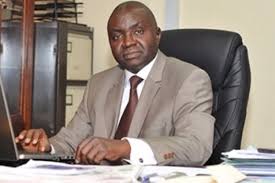
Nigeria’s Capacity To Service Debt Very Weak – LCCI
The Director-General of the Lagos Chamber of Commerce and Industry, Dr Muda Yusuf, says Nigeria’s debt profile is unsustainable.
Yusuf said this in an interview with Channels TV.
The video of the interview was posted on the television station’s YouTube channel on Sunday.
According to Yusuf, Nigerians should be worried about the level of accumulated debt as it appears the nation lacks the capacity to service the debt.
He said, “We should be worried, particularly from the point of view of the capacity to service the debt.
“In 2020, for instance, debt servicing to revenue was close to 80 per cent. In the current budget, the debt service provision is about N3.2tn. This is huge and clearly, the debt profile is clearly unsustainable.
“The debt to GDP argument is something that cannot stand in this type of economy because some major components of the GDP are not revenue-generating.
“Take for instance, the agricultural sector. The agricultural sector accounts for about 23 per cent of the GDP. What is the contribution of agriculture to revenue? I am not sure it is up to two per cent. The distributive trade sector accounts for about 16 per cent of GDP. What is the contribution of that sector to revenue? It is also very low.
020 – Envoy
“So, we have a major issue with productivity of many sectors, and that is why what we should be worrying about is how to ensure that the debt situation is sustainable, and we can only do that if we relate a lot more with the capacity to service the debt.
“Currently, our capacity to service debt is very weak. And this is time for a very difficult choice to be made if we want to get out of this situation.”
He further emphasised the need to cut the costs of governance, which keep increasing despite the drop in revenue generation.
He added, “We need to deal with issues of cost of governance because in all of this, revenue is dropping. It is shrinking but the costs are still going up.”
He said the easiest thing to do in this kind of situation was to explore how to bring costs under control.
